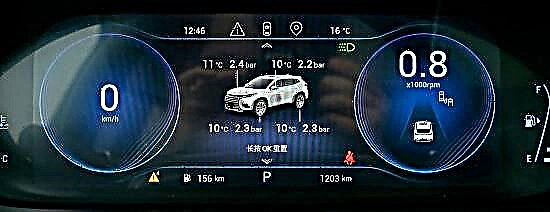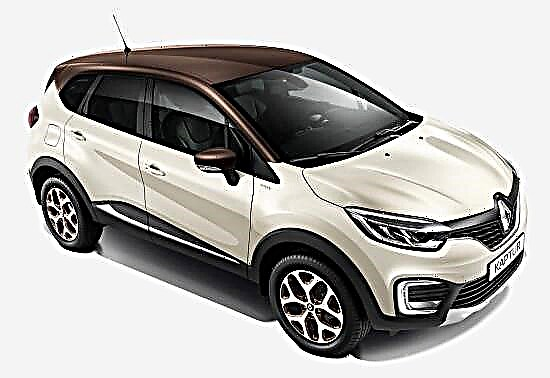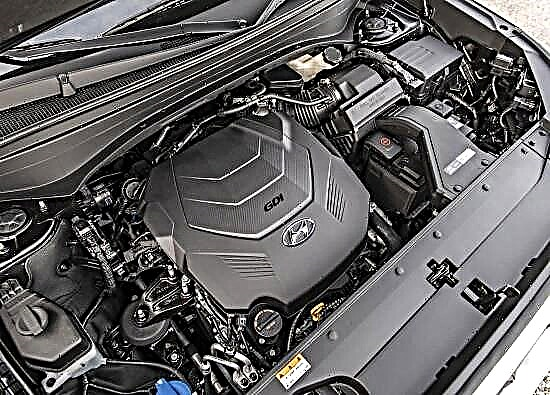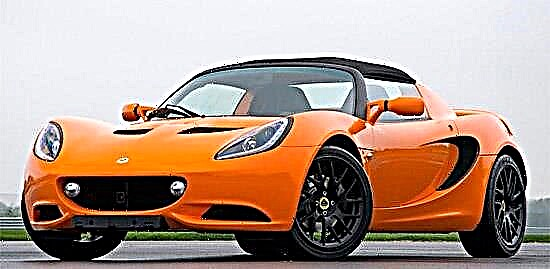Lotus Elise is the most affordable supercar in the Russian automotive market. This chic sports roadster will delight its owner not only with a stylish appearance, but also with excellent acceleration dynamics, incredible handling on any road and high ride comfort. Lotus Alice is a car worthy of the closest attention, which means it's time to take a closer look.
The first cars under the Lotus Elise brand were released in 1996, when the official start of sales in England was given. A little later, the car reached the streets of Russian cities, where it immediately began to attract the attention of onlookers and fans of luxury cars. The development and finishing of the model took almost two years, and this sports car got its name in honor of the granddaughter of the chairman of Lotus, who personally supervised the process of creating the novelty.
In 2010, the car underwent the last major restyling to date. In addition, a whole range of measures was carried out to refine the car, after which the Lotus Elise became an almost ideal sports car, but at the same time retained its status as the most affordable elite sports car. In Russia today, this model is represented by three modifications at once. In addition to the standard Lotus Elise, official dealers offer its sports version of the Elise CR, as well as a more powerful version of the Elise S with a 220 hp engine.

All cars from the Lotus Elise line are dressed in an unusually elegant body, based on a unique chassis, specially designed by the engineers of the manufacturer. As a basis for the chassis, the developers took the nodes that had previously been successfully tested in the royal races of the Formula-1 series. The main point is that all the elements are made of light aluminum profiles, which are glued together with a special aviation glue, and in some places are connected with industrial rivets. The result is a comfortable monocoque frame to which various body panels made of unique self-reinforcing polypropylene are attached.
This approach to body design allows Lotus engineers to create cars that are incredibly light for their class, capable of accelerating quickly and maintaining very high speeds, with a less powerful engine than competitors on board. The lightness of the car at high speeds could play with the Lotus Elise and a cruel joke, but talented English engineers calculated and carefully thought out everything, providing the sports car with a unique underbody relief that helps to defuse the air flow, as a result of which Lotus Alice literally sticks to the road, while maintaining ease of maneuvering.

If we talk about numbers, then the curb weight of the sports car Lotus Elise is only 876 kilograms, while competitors have long jumped over a ton, or even one and a half. I must admit that these figures look just phenomenal, given that the car is 3785 mm long, 1850 mm wide, and the height of a sports roadster is 1117 mm.
The shape of the body, which has an aerodynamic drag coefficient of 0.41, also contributes to the dynamism of acceleration and stability on the road. The stylish shape of the two-door layout looks somehow cosmic, mesmerizing and incredibly harmonious. Every detail is made for a reason, but with a special mission that affects the overall aerodynamics of the body. Every protrusion, every little thing, every non-standard line or bulge - all this plays an invaluable role, without which this car would immediately lose its appeal and sporting fury.
At the front, the appearance of the Lotus Elise sports car is formed by teardrop-shaped headlights, under which there is a stylish bumper that practically merges with the wings and hood of the car. The bumper has an impressive "smiling" imitation of the radiator grille with built-in round marker lights, on both sides of which there are air intakes. The hood features two ventilation grille inserts that merge with stylish protrusions that merge into a streamlined windshield.
The side section of the body is decorated with a high sill that blends seamlessly into the rear air intakes that cool the side radiators. Above the threshold is a curved door with rounded edges, which has a wide but low profile, which can make it difficult for people with tall stature to get into the car.
At the rear, the body has smooth slope lines topped with a stylish sports spoiler, two pairs of round taillights and a massive bumper with a twin tailpipe integrated exactly in the middle. All body elements are securely fastened together, enlarged and visible gaps can be noted only in the attachment points of the front fenders. As for the roof, it can be either hard or soft, depending on the wishes of the buyer.

Perhaps the only minor disappointment is the interior layout of the Lotus Elise sports car. Whatever one may say, but the two-seater salon manages to be a little cramped, so the car will definitely not suit the dimensional drivers. But, despite this misunderstanding, the interior looks unusually stylish, with all its elements reminiscent of the sportswear of a roadster. The rich decoration and quality of the interior are complemented by the high ergonomics of the arrangement of the control elements, as well as the originality of the lines of the front panel. Another feature of the interior can be safely called the absence of a center console.
Speaking of technical characteristics, the Lotus Elise sports car is equipped with a 1.6 VVT-i Toyota 1ZR-FAE four-cylinder petrol engine, which is installed transversely at the rear of the car, that is, this roadster is a typical rear-wheel drive sports car. There are four valves per cylinder, in addition, a distributed fuel injection system is provided, and the engine displacement is 1.6 liters (1598 cm3)
The power of the installed power unit is 136 hp, achieved at 6800 rpm. The maximum torque is 160 Nm at 4400 rpm. As you can see, the engine for a sports car is not so high-spirited, but, given the first-class aerodynamics and lightness of the body, it allows a maximum speed of 204 km / h, and acceleration to the first hundred will take only 6.5 seconds.
As a standard gearbox, the manufacturer offers a 6-speed manual gearbox, which allows for optimal acceleration dynamics and easy shifting while driving at high speeds. For those who find the standard "mechanics" an inconvenient or outdated option, Lotus offers to try out the unique Elise SPS gearbox, the installation of which is possible as an option. The SPS (Serial Precision Shift) robotic gearbox is a unique development of the British automaker's engineers, based on the most advanced technological solutions in the field of automation. This gearbox supports several modes of operation (manual and several automatic, including "Sport"), which are controlled using convenient paddle shifters that do not distract the driver from the road. Fast switching between gearbox operating modes will allow you to use the optimal parameters of the car's movement depending on the environment, providing maximum acceleration dynamics when overtaking on the highway or a smooth set of speed when driving in the city.
A small engine size has a positive effect on fuel consumption.When driving around the city, the Lotus Elise spends about 8.3 liters for every 100 kilometers, during intercity trips on the highway, the consumption is reduced to 5 liters exactly, which means that with a combined cycle of movement, fuel consumption averages 6.3 liters per 100 kilometers. The volume of the fuel tank of the sports car Lotus Elise is 44 liters, providing at least 530 kilometers without refueling.
In addition to the main version of the Lotus Elise sports car, there is also a more sporty version on the Russian market, which the manufacturer calls Elise CR (Club Racer). This configuration Lotus Alice has the same engine and gearbox as the base modification, but differs in the layout of the cabin, and also has a chassis lighter by 24 kilograms. The main feature of the redesigned interior of the Elise CR is the precise color matching that perfectly matches the body color, which creates a unique, attractive and incredibly stylish look, fully imbued with the sporty spirit of Lotus.
Another complete set / modification of this sports car - Lotus Elise S - is distinguished by the presence of a more powerful engine. The role of the Elise S power unit is performed by the 1.8 DOHC VVTL-i Toyota 2ZR-FE engine with a power of 220 hp. and a working volume of 1.8 liters (1797 cm3). The petrol engine has four cylinders and a maximum torque of 250 Nm at 4600 rpm. The fastest roadster Lotus Elise S has a top speed of 234 km / h, and acceleration to the first hundred takes 4.6 seconds. In addition to the engine, this modification also differs in minor changes in the body design - there are no parking lights in front, and a completely different spoiler is installed at the rear.
Fans of Lotus cars have always been delighted with their relative availability, which favorably distinguishes British sports cars from competitors. So the basic version of Lotus Elise will cost the buyer an amount starting from the mark of 2,425,000 rubles. A more stylish configuration of the Lotus Elise CR is even cheaper - 2,392,000 rubles. A nimble and powerful modification of the Lotus Elise S is sold in dealerships at a price of 2,958,000 rubles. For all modifications, the possibility of installing the Elise SPS robotic gearbox is available, which will add another 108,000 rubles to the cost of the car.











